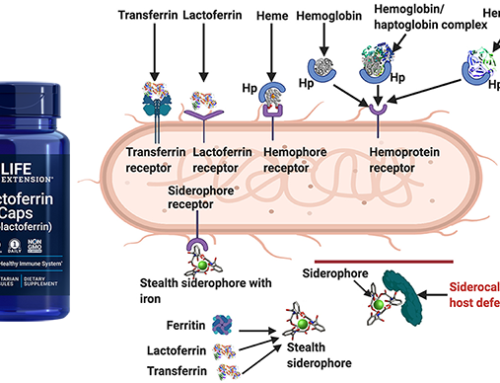Introduction
The effects that herbicides have on humans are controversial. Many scientists have sometimes arrived at contradicting findings when studying the effects that herbicides have on the environment and subsequently on humans. Most of the negative effects of herbicides arise from their ability to alter the composition of the human gut microbiome. The diversity of the human gut microbiome has effects on human health which are not fully understood. The diversity of the human gut microbiome has been demonstrated to influence the content of what the human host extracts from food, the mental health of individuals, as well as produce hormonal and immunological responses not entirely understood (Clemente, 2012). The microbiome also influences a number of the metabolic pathways of the human host including those of glusinolates and isoflavones (Institute of Medicine, Food and Nutrition Board, 2013). It is therefore important for researchers, governments, health care workers and public health officials to address these controversies in order to find a lasting solution to the control and use of herbicides to find safer formulations for the current and future generations.
Glyphosate
The effects and presence of glyphosate on the environment and food and consequently on human health has been a subject of debate for decades. Mesnage and Antoniu (2017) argue in their research paper that all publications on the long-term effects of glyphosate exposure, in terms of health effects to humans, are incorrect and non-factual. They specifically focus on two authors who have proposed that glyphosate exposure is a risk factor for many chronic illnesses such as infertility, osteoporosis, birth defects, infections, obesity, neuropathies, asthma, diabetes, and cancers. Mesnage and Antoniu (2007) dismiss these authors, arguing that they base their arguments on syllogism instead of scientific evidence.
Glyphosate is the most commonly used herbicide given its relatively low toxicity. Still, its use raises concerns especially on the people and farmers living and working in farms where the herbicides are used and nearby places. Concerns over the use of the herbicide glyphosate increased in 2015 when the World Health Organization (WHO) issued a report through its research arm indicating that it is probably carcinogenic. The World Health Organization used hazard evaluation and placed glyphosate in Group 2A. However, the evaluation conducted by the European Food Safety authority in October the same year dismissed the classification of WHO and added that glyphosate is unlikely to cause cancer or increase carcinogenicity. In contrast, the International Agency for Research on Cancer Working Group (IARC WG) reported that there is limited evidence on the existence of the potential for glyphosate to be carcinogenic, which means that there is a positive correlation though not entirely conclusive (Valavanidis, 2018).
Still, other authors have scientifically proved that exposure to glyphosate can have negative effects on the normal neurological processes which can cause diseases such as autism and Asperger’s. Shaw (2017) found that the widespread use of glyphosate is correlated with the derangement of the gastrointestinal flora. Glyphosate diminishes the presence of beneficial bacteria and increases the presence of harmful bacteria in the gastrointestinal tract. Clostridium is one of the harmful bacteria that are increased. The bacteria produce metabolites which inhibit dopamine-beta-hydroxylase. The inhibition leads to increased dopamine, which is responsible for the symptoms of neurological disorders.
Bruggen et al. (2018) conducted a detailed research on the residues of glyphosate, their movements, and aminomethyl phosphonic acid (AMPA), which is its breakdown product. The researchers concluded that the accumulation of the compounds arising from glyphosate on the environment exposes animals and humans to ultra-low doses chronically and animal data has shown a positive correlation with negative health effects. Additionally, the extended use of glyphosate results in the selection of microorganisms and weeds that are glyphosate-resistant.
Glyphosate also imposes selective pressure on to cause shifts or changes in microbial compositions. The shifts have been shown to contribute to the proliferation of animal and plant pathogens. Bruggen et al. (2018) further proposed that given that glyphosate’s selection pressure on bacteria can lead to changes in the composition of the gut microbiome and increase the resistance of some bacteria that may be clinically significant.
Reasons for Bias in Research Results
Many studies have been carried out in an attempt to qualify and quantify the health effect of glyphosate use on humans. However, most studies have ended in conflicting findings which have led to contradicting conclusions, and this has made the topic controversial for decades. For instance, in March 2015, the International Agency for Research on Cancer (IARC) issued a statement labeling glyphosate as being probably carcinogenic. However, all regulatory bodies have maintained their position that they have been holding since its inception in agricultural use in 1974 that the herbicide has low potential hazards to mammals. A joint Food and Agriculture Organization of the United Nations (FAO) and World Health Organization (WHO) evaluation as well as a European Union (UN) assessment did not confirm the IARC conclusion.
Tavazora et. al. (2017) conducted a review on the studies that The IARC and the EU did to arrive at their conflicting conclusions. The researchers assessed the evidence of each and found that the IARC Working Group studied the trends of hemangiosarcoma and renal tumors in two separate studies for both. In these studies, tumor incidence did not increase significantly in the females that were examined. The group also studied increases in adenoma incidents and they did not find any evidence to show transformation to carcinomas in the thyroid C-cell of the female rats, hepatic cells of the male rats, and the pancreatic islet cells of the male rats.
In three separate studies, there was no evidence of any increase in the incidence of tumors. Similarly, several other studies fail to provide accurate conclusions due to several factors. Some studies lacked statistical significance in their trend analyses, falling out of a historical range that is relevant, absence of pre-neoplastic lesions consideration, finding of increases in tumors when the doses provided were more than or equal to the Maximum Tolerable Dose.
Statistics of Glyphosate Use
In 1974, the United States rangers and farmers applied an active ingredient of approximately 0.36 million kg. The number increased steadily to 12.5 million kg through 1995, making it the seventh most used pesticide in the country. As genetically engineered crops gained popularity between the years 1996 to 2000, glyphosate application increased drastically to 36 million kg. The agricultural use of glyphosate at this time accounted for 80 percent of the total amount used nationally. In 2010, ten years later, the agricultural use of the herbicide increased to 90%. The total amount of glyphosate used in the agricultural sector between the years 1974 and 2014 is 1.37 billion and its usage had increased 300 times (Benbrook, 2016).
| Glyphosate Use(1000 kg) | Agricultural (1000 kg) | Non-agricultural (1000 kg) | Share agricultural (%) | Share non-agricultural (%) | |
| 1974 | 625 | 363 | 272 | 57.1 | 42.9 |
| 1982 | 3538 | 2268 | 1270 | 64.1 | 35.9 |
| 1990 | 5761 | 3357 | 2404 | 58.3 | 41.7 |
| 1995 | 18144 | 12474 | 5670 | 68.8 | 31.3 |
| 2000 | 44679 | 35720 | 8959 | 79.9 | 20.1 |
| 2005 | 81506 | 71441 | 10065 | 87.7 | 12.3 |
| 2010 | 118298 | 106963 | 11335 | 90.4 | 9.6 |
| 2012 | 118753 | 107192 | 11562 | 90.3 | 9.7 |
| 2014 | 125384 | 113356 | 113356 | 90.4 | 9.6 |
Table 1: Use of the active ingredient glyphosate between the years 1974 and 2014 in the United States (Benbrook, 2016).
Why Glyphosates are being Used
In spite of the health concerns that have been raised in several studies on the negative health effects of glyphosate on humans and mammals in general, it remains to be the most widely used herbicide worldwide. Most farmers continue to prefer glyphosate over other herbicides because it is very effective. Glyphosate kills both perennial and annual weeds because it is systemic in that when applied to foliage, it can move to the branches, the stem, and the roots. Glyphosate also has the advantage of being non-selective. The herbicide is convenient for most farmers because it can kill most weeds including broadleaves, sedges, and grasses.
Glyphosate does not create soil residue. It is therefore suitable for farmers because it allows them to safeguard the desirable plants when killing weeds below shrubs and trees. This is because it becomes rapidly inactive once it comes into contact with soil particles to which it is bound. Farmers also prefer glyphosate because it is economical and cheaper than other herbicides. It is only until recently that concerns have been raised concerning its use. This means farmers have been accustomed to glyphosate given that they have been using it for long, and they are likely to continue using it.
Alternatives to Glyphosate
The alternatives available for glyphosate depend on the type of weed that a farmer wants to eliminate. Given the advantages of glyphosate, it can be concluded that controlling weeds on a landscaper would be more difficult given that more costs would be incurred and site visits would be more. As such, the farmer would need to consider the options carefully. Alternatives to glyphosate can be either chemical or nonchemical. Chemical alternatives include glufosinate, pelargonic acid, ammonium nonanoate, fatty acid ammonium soaps, capric and caprylic acid, acetic acid or vinegar, d-limosene, and plant oils of citric, cinnamon, cloves etc.
The non-chemical methods include manual removal and flame weeding. Manual removal involves hand weeding the farmlands. Weed removal should be carried out early before the weeds start seeding and early enough before they grow and expand their root systems. Additionally, this can only be effective if the weeding is done as frequently as possible. This creates the main advantage of manual removal which is lack or inadequate supply of the labor and the expenses involved. Flame weeding can used to kill broadleaf. However, it may not be suitable for agriculture in most cases because, being hot, it can kill even the desirable crops. It is therefore reserved for gravel mulch, between pavers, and driveway cracks (NC State Extension, n.d.).
Other Herbicides
Although glyphosate is a common and well-known herbicide there are many more, too numerous to review in one paper. However, organophosphate and its other related chemical forms are the most widely utilized chemical compound found in herbicides globally (Velmurugan et al., 2017). The chemical compound organophosphate is utilized in insecticides to inactivate the enzyme acetylcholinesterase which is vital to neurological signaling in insects and mammals alike (Fukuto, 1990).
 |
| Figure 1. General structure of organophosphates insecticides (Costa, 2017). |
The number of research papers investigating organophosphates has greatly increased since 1950 which demonstrates how much the chemical compound has been researched.
 |
| Figure 2. Number of papers listed in PubMed in selected years (1950–2015) using the search terms “organophosphorus” or “organophosphate” (Costa, 2017). |
Hormone Disruption and Gut Dysbiosis in Humans
Although there has been conflicting evidence in the past about the health effects of herbicides on humans there is growing evidence that herbicides are causing many ailments and diseases through its myriad of effects on the gut microbiota and hormone disruption.
Hormone Disruption.
Glyphosate has been shown to disrupt mammalian cytochrome P450 aromatase activity at concentrations 100 times lower than used in agriculture (Sophie et al., 2005).
 |
| Figure 3. Combined effects of glyphosate and minute levels of Roundup on JEG3 aromatase activity in serum-free medium (n = 9). It was obtained at non-toxic concentrations after 18 hr exposure. **p < 0.01 (Sophie et al., 2005). |
Hormone disruption, like the aromatase activity shown in Figure 1., has been attributed to tumor promotion and may lead to impaired reproduction and other abnormalities related to sexual differentiation, growth, and overall human development (Sanderson et al., 2000). Numerous studies have correlated hormone disruption to the incidence of cancers, especially breast and prostate cancers making hormone disruption a serious health concern (Soto & Sonnenschein, 2010).
Gut Dysbiosis.
Many herbicides have been shown to influence the composition of the gut microbiota adversely. Liu et al. (2017) found that organophosphate pesticide poses a threat to human health given that they accumulate in the human body over time. Organophosphates change the composition of the gut microbiota. The effects were more pronounced when the bile salt hydrolase and Lactobacillus activities are high. Organophosphates enhance the expression on bile acid production, decrease the activity of the genes that enhance the reabsorption of bile acids, increase hydrophobicity, and consequently increase the amount of bile acids. Consequently, continued exposure to organophosphates can lead to metabolic disorders and other related diseases.
In another study, organophosphorus pesticides were found to increase the epidemic of inflammatory diseases (Liang et al., 2017). Organophosphates reduce the ability of the barrier in the gut to prevent lipopolysaccharides from seeping into the body. The metabolic derangements also affect the composition of the gut microbiota, which may contribute to obesity given that it induces low-grade inflammation. Organophosphates also reduce insulin sensitivity through these derangements which may lead to hyperglycemia and Type II diabetes (Juntarawijit & Juntarawijit, 2018).
Evidence has also been mounting that autism spectrum disorders (ASD), some forms of mental illness and Pervasive Developmental Disorder Not Otherwise Specified (PDD-NOS) are closely tied to the type of gut microbiota humans have. One study compared the fecal microbiota composition of healthy children with children that had either PDD-NOS or ASD and showed there was a microbiota dysbiosis in the children with PDD-NOS or ASD (De Angelis et al., 2013). Another study postulated that the rise of autism spectrum disorders can be related to the increase in the Clostridium bacteria in the gut of toddlers and how environmental glyphosate levels may be contributing to it (Argou-Cardozo & Zeidán-Chuliá, 2018).
 |
| Figure 4. Glyphosate (GLY) may hypothetically contribute to ASD etiology by deleteriously influencing gut microbiome (Argou-Cardozo & Zeidán-Chuliá, 2018). |
Kang (2019) demonstrates the long-term safety and efficacy of Microbiota Transfer Therapy (MTT) as a potential therapy to treat children with ASD that have gut dysbiosis. This proof of concept treatment demonstrates the plausibility about how glyphosate is negatively altering the gut microbiota in humans. It can be inferred that glyphosate and other herbicides may be the root cause of the rise in ASD and other mental health disorders and should be researched further.
Control of Herbicides and Future Implications
Bruggen et al. (2018) suggest that interdisciplinary research should be conducted on the relationships between exposure to low levels of glyphosate, human and plant diseases, antibiotic emergence and resistance, and shifts in microbial communities. It is important to understand the tolerable levels of glyphosate in the environment and food in order to set standards and limits for its use. Utilitarianism shows that the use of lethal chemicals to eliminate some plants from an ecosystem can be permissible if the benefits of doing so outweigh the negative consequences (Messing, 2015). As such, after determining the tolerable amounts of herbicides in food and the environment, the relevant authorities can regulate the use of pesticides to ensure that the benefits of using them outweigh the negative implications.
Controlling the use of pesticides is beneficial both to the current generation as well as to the future generations. Herbicides cause changes to ecosystems over several generations. The effects of use may not be felt immediately but until the cumulative effect reaches the effect size. New issues may also arise with time as a product of the ecological complexities or processes in different contexts in a manner that may have not been tested. As such, the continued use of herbicides may affect future generations adversely if it is not controlled. Future generations may conclude that the previous generations were insensitive when the adverse effects of herbicides reach them. It is therefore, important that we perform rigorous research using data from comparators over long periods of time to figure out the exact consequences of herbicide use on the environment and in human health (Sweet, n.d.).
Conclusion
In conclusion, the effects of herbicides on the environment and on human health have had contradicting findings for several years. While some scientists have found convincing evidence that some specific herbicides have adverse consequences on human health, others have disputed these findings, claiming their findings are inconclusive. Regardless of these controversies, all scientists agree that herbicides affect the environment in a way not fully understood. Clearly, anything that affects the environment has implications on human health and all life, and it should be controlled and studied critically. Researchers have demonstrated the effects of exposure to herbicides on the human body by deranging metabolic processes and gut microbiota. As such, it is our ethical obligation to research the long-term effects of herbicides in order to regulate their use and safeguard current and future generations. So, how do we escape the use of pesticides? I believe indoor, hydroponic, and vertical farming in conjunction with robotics and A.I. can be a big part of the answer, but that is another article!
References
Argou-Cardozo, I., & Zeidán-Chuliá, F. (2018). Clostridium Bacteria and Autism Spectrum Conditions: A Systematic Review and Hypothetical Contribution of Environmental Glyphosate Levels. Medical Sciences, 6(2), 29. doi:10.3390/medsci6020029
Benbrook, C. M. (2016). Trends in glyphosate herbicide use in the United States and globally. Environmental Sciences Europe, 28(1). doi:10.1186/s12302-016-0070-0
Bruggen , V., He M. M., Shin, K., Mai, V., Jeong, K. C., Finckh, M. R., & Morris, J. G. (2018). Environmental and health effects of the herbicide glyphosate. Sci Total Environ. 616-617:255-268. doi: 10.1016/j.scitotenv.2017.10.309
Clemente, J. C., Ursell, L. K., Parfrey, L. W., & Knight, R. (2012). The impact of the gut microbiota on human health: an integrative view. Cell, 148(6), 1258–1270. doi:10.1016/j.cell.2012.01.035
Costa, L. G. (2017). Organophosphorus Compounds at 80: Some Old and New Issues. Toxicological Sciences, 162(1), 24–35. https://doi.org/10.1093/toxsci/kfx266
De Angelis M, Piccolo M, Vannini L, Siragusa S, De Giacomo A, Serrazzanetti DI, et al. (2013) Fecal Microbiota and Metabolome of Children with Autism and Pervasive Developmental Disorder Not Otherwise Specified. PLoS ONE 8(10): e76993. https://doi.org/10.1371/journal.pone.0076993
Fukuto, T. R. (1990). Mechanism of action of organophosphorus and carbamate insecticides. Environmental Health Perspectives, 87, 245–254. https://doi.org/10.1289/ehp.9087245
Institute of Medicine, Food and Nutrition Board. (2013). The human microbiome, diet, and health: Workshop summary. National Academy of Sciences: Washington D. C.
Juntarawijit, C., & Juntarawijit, Y. (2018). Association between diabetes and pesticides: a case-control study among Thai farmers. Environmental health and preventive medicine, 23(1), 3. doi:10.1186/s12199-018-0692-5
Kang, D.-W., Adams, J. B., Coleman, D. M., Pollard, E. L., Maldonado, J., McDonough-Means, S., Krajmalnik-Brown, R. (2019). Long-term benefit of Microbiota Transfer Therapy on autism symptoms and gut microbiota. Scientific Reports, 9(1), 5821. https://doi.org/10.1038/s41598-019-42183-0
Liang, Y., Zhan, J., Liu, D., Luo, M., Han, J., Wang, P. (2017). Organophosphorus pesticide chlorpyrifos intake promotes obesity and insulin resistance through impacting gut and gut microbiota. Microbiome, 7(19). Doi: 10.1186/s40168-019-0635-4
Liu, Q., Shao, W., Zhang, C., Xu, C., Wang, Q., … Gu, A. (2017). Organochloride pesticides modulated gut microbiota and influenced bile acid metabolism in mice. Environ Pollut. doi: 10.1016/j.envpol.2017.03.068
Mesnage, R. & Antoniu, M. N. (2017). Facts and Fallacies in the Debate on Glyphosate Toxicity. Front Public Health, 5. doi: 10.3389/fpubh.2017.00316
Messing, A. (2015). An Ethical Analysis of Lethal Control Practices for Invasive Species Management. University of Nebraska – Lincoln. Retrieved from http://digitalcommons.unl.edu/cgi/viewcontent.cgi?article=1150&context=envstudtheses
NC State Extension. (n.d.). Are There Alternatives To Glyphosate For Weed Control In Landscapes? NC State Extension Publications. Retrieved from https://content.ces.ncsu.edu/are-there-alternatives-to-glyphosate-for-weed-control-in-landscapes
Sanderson, J. T., Seinen, W., Giesy, J. P., & van den Berg, M. (2000). 2-Chloro-s-Triazine Herbicides Induce Aromatase (CYP19) Activity in H295R Human Adrenocortical Carcinoma Cells: A Novel Mechanism for Estrogenicity? Toxicological Sciences, 54(1), 121–127. https://doi.org/10.1093/toxsci/54.1.121
Shaw, W. (2017). Elevated Urinary Glyphosate and Clostridia Metabolites With Altered Dopamine Metabolism in Triplets With Autistic Spectrum Disorder or Suspected Seizure Disorder: A Case Study. Integr Med (Encinitas) 16(1).
Sophie, R., Safa, M., Herbert, S., Nora, B., & Gilles-Eric, S. (2005). Differential Effects of Glyphosate and Roundup on Human Placental Cells and Aromatase. Environmental Health Perspectives, 113(6), 716–720. https://doi.org/10.1289/ehp.7728
Soto, A. M., & Sonnenschein, C. (2010). Environmental causes of cancer: endocrine disruptors as carcinogens. Nature reviews. Endocrinology, 6(7), 363–370. doi:10.1038/nrendo.2010.87
Sweet, J. (n.d.). Assessing Long Term Environmental Impacts, E.G. GM Herbicide Tolerant Plants. European Food Safety Authority. Retrieved from https://www.efsa.europa.eu/sites/default/files/event/documentset/gmo090914-p6.pdf
Tarazona, J. V., Court-Marques, D., Tiramani, M., Reich, H., Pfeil, R., Istace, F., & Crivellente, F. (2017). Glyphosate toxicity and carcinogenicity: A review of the scientific basis of the European Union assessment and its differences with IARC. Archives of Toxicology, 91(8), 2723-2743. doi:10.1007/s00204-017-1962-5
Valavanidis, A. (2018). Glyphosate, the Most Widely Used Herbicide. Health and Safety Issues. Why Scientists Differ in Their Evaluation of its Adverse Health Effects. National and Kapodistrian University of Athens. Retrieved from https://www.researchgate.net/publication/323727351_Glyphosate_the_Most_Widely_Used_Herbicide_Health_and_safety_issues_Why_scientists_differ_in_their_evaluation_of_its_adverse_health_effects
Velmurugan, G., Ramprasath, T., Swaminathan, K., Mithieux, G., Rajendhran, J., Dhivakar, M., Ramasamy, S. (2017). Gut microbial degradation of organophosphate insecticides-induces glucose intolerance via gluconeogenesis. Genome biology, 18(1), 8. doi:10.1186/s13059-016-1134-6







